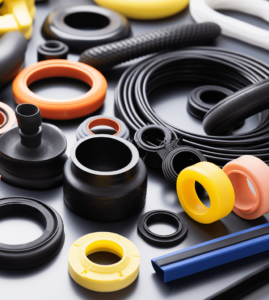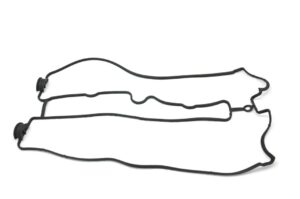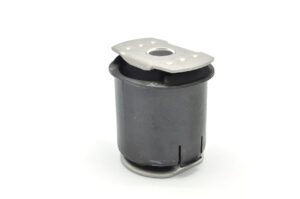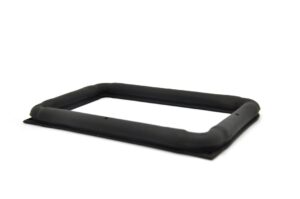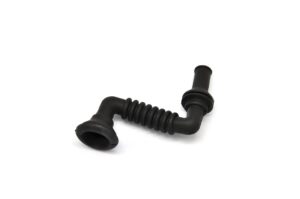Description
Square Rubber Gasket
Square rubber gaskets are sealing devices made of rubber, shaped in a square or rectangular profile.
They are designed to fill the space between two or more mating surfaces, generally to prevent leakage from or into the joined objects while under compression.
Their primary function is to provide a pressure-tight seal between two components, often where one of the components is a flat surface.
Types of rubber gaskets
There are many different types of rubber gaskets available. Some of the most common types include:
- Flat gaskets: Flat gaskets are the most basic type of square rubber gasket. They are typically used to seal two flat surfaces together.
- O-rings: O-rings are circular gaskets that are made from a single piece of rubber. They are typically used to seal cylindrical or round surfaces together.
- U-rings: U-rings are similar to O-rings, but they have a U-shaped cross-section. They are typically used to seal surfaces that are not perfectly flat or round.
- Rectangular gaskets: Rectangular gaskets are used to seal two rectangular surfaces together.
Applications of square rubber gaskets
Square rubber gaskets are used in a variety of applications, including:
- Automotive: Square rubber gaskets are used in a variety of automotive applications, including engine blocks, transmissions, and differentials.
- Industrial: Square rubber gaskets are used in a variety of industrial applications, including HVAC systems, pumps, and valves.
- Medical: Square rubber gaskets are used in a variety of medical applications, including medical devices and surgical equipment.
Advantages of square rubber gaskets
Square rubber gaskets offer many advantages, including:
- Cost-effectiveness: Square rubber gaskets are typically less expensive than other types of gaskets, such as metal gaskets.
- Durability: Square rubber gaskets can be very durable and can withstand a variety of conditions.
- Versatility: Square rubber gaskets can be used in a variety of applications.
Disadvantages of square rubber gaskets
Square rubber gaskets also have a few disadvantages, including:
- Temperature limitations: Square rubber gaskets can be damaged at high temperatures.
- Chemical resistance: Square rubber gaskets may not be resistant to certain chemicals.
How to choose a square rubber gasket
When choosing a square rubber gasket, it is important to consider the following factors:
- Application: The type of application will determine the size, shape, and material of the gasket.
- Pressure: The pressure of the application will determine the thickness of the gasket.
- Temperature: The temperature of the application will determine the type of rubber material used.
- Chemical resistance: The chemicals that will be present in the application will determine the type of rubber material used.
How to customize square rubber gaskets?
Customizing square rubber gaskets involves several key steps to ensure they meet specific requirements and applications.
Here’s a guide on how to customize square rubber gaskets:
- Determine the Application: Understand where and how the gasket will be used. Different applications may require different properties in terms of resistance to chemicals, temperature, pressure, and environmental conditions.
- Select the Right Material: Choose the appropriate rubber material based on the application's needs. Common materials include Natural Rubber: Good for abrasion resistance and tensile strength.
Neoprene: Resistant to oil and chemicals, weather, and aging.
Nitrile: Excellent for oil and fuel resistance.
Silicone: Suitable for high and low-temperature extremes.
EPDM: Known for its weather and ozone resistance. - Specify Dimensions and Shape: Provide the exact dimensions of the gasket required, including thickness, length, and width. The precision in dimensions is crucial for ensuring a proper seal.
- Determine the Hardness: Specify the hardness of the rubber, often measured in a durometer (Shore A). The hardness will affect the compression and sealing capabilities of the gasket.
- Consider Special Features: Depending on the application, you might need additional features such as:
Reinforcement: For additional strength or to prevent stretching.
Adhesive Backing: To aid in installation or to maintain positioning.
Cutouts or Holes: For bolts or other components to pass through.
- Compliance and Standards: Ensure that the gasket meets any necessary industry standards or regulatory compliance requirements, especially for applications in food processing, pharmaceuticals, or automotive industries.
- Consult with a Manufacturer: Work with a gasket manufacturer who can provide expertise and advice. They can assist with material selection, and design considerations, and can often provide prototypes or samples for testing.
- Prototype and Testing: Before mass production, it’s advisable to prototype the custom gasket. Test it under actual or simulated working conditions to ensure it meets all functional requirements.
- Place the Order: Once all specifications are finalized and tested, place the order with the chosen manufacturer, providing all the details of your customization.
- Quality Assurance: Upon receiving the gaskets, conduct a quality check to ensure they meet the specified requirements and are free from defects.
By carefully considering each of these steps, you can effectively customize a square rubber gasket that meets your specific needs and ensures optimal performance in its intended application.
Ready to Create Your Custom Square Rubber Gasket? Contact us today to discuss your specific needs with our experts. We'll help you design and manufacture the perfect gasket solution tailored for your unique application. Let's seal the deal on your project's success!














